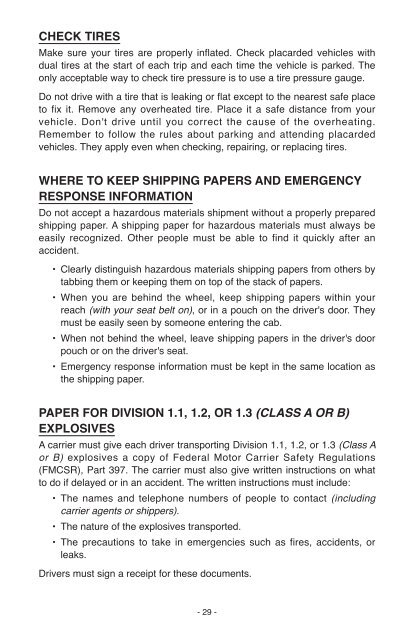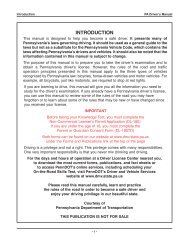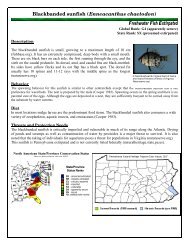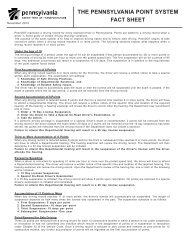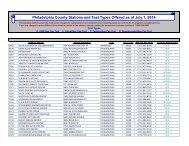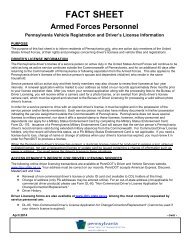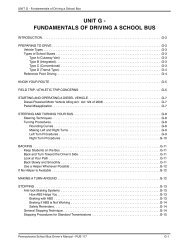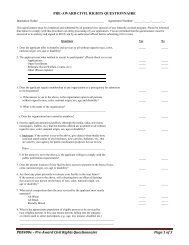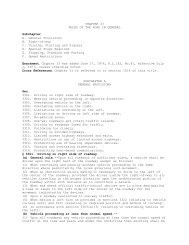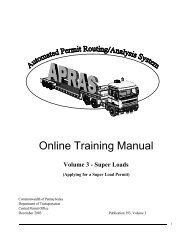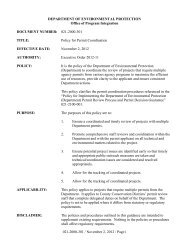PennDOT - Hazardous Materials Endorsement Renewal Manual
PennDOT - Hazardous Materials Endorsement Renewal Manual
PennDOT - Hazardous Materials Endorsement Renewal Manual
You also want an ePaper? Increase the reach of your titles
YUMPU automatically turns print PDFs into web optimized ePapers that Google loves.
CHECK TIRES<br />
Make sure your tires are properly inflated. Check placarded vehicles with<br />
dual tires at the start of each trip and each time the vehicle is parked. The<br />
only acceptable way to check tire pressure is to use a tire pressure gauge.<br />
Do not drive with a tire that is leaking or flat except to the nearest safe place<br />
to fix it. Remove any overheated tire. Place it a safe distance from your<br />
vehicle. Don't drive until you correct the cause of the overheating.<br />
Remember to follow the rules about parking and attending placarded<br />
vehicles. They apply even when checking, repairing, or replacing tires.<br />
WHERE TO KEEP SHIPPING PAPERS AND EMERGENCY<br />
RESPONSE INFORMATION<br />
Do not accept a hazardous materials shipment without a properly prepared<br />
shipping paper. a shipping paper for hazardous materials must always be<br />
easily recognized. Other people must be able to find it quickly after an<br />
accident.<br />
• Clearly distinguish hazardous materials shipping papers from others by<br />
tabbing them or keeping them on top of the stack of papers.<br />
• When you are behind the wheel, keep shipping papers within your<br />
reach (with your seat belt on), or in a pouch on the driver's door. They<br />
must be easily seen by someone entering the cab.<br />
• When not behind the wheel, leave shipping papers in the driver's door<br />
pouch or on the driver's seat.<br />
• Emergency response information must be kept in the same location as<br />
the shipping paper.<br />
PAPER FOR DIVISION 1.1, 1.2, OR 1.3 (CLASS A OR B)<br />
EXPLOSIVES<br />
a carrier must give each driver transporting Division 1.1, 1.2, or 1.3 (Class A<br />
or B) explosives a copy of Federal Motor Carrier Safety Regulations<br />
(FMCSR), Part 397. The carrier must also give written instructions on what<br />
to do if delayed or in an accident. The written instructions must include:<br />
• The names and telephone numbers of people to contact (including<br />
carrier agents or shippers).<br />
• The nature of the explosives transported.<br />
• The precautions to take in emergencies such as fires, accidents, or<br />
leaks.<br />
Drivers must sign a receipt for these documents.<br />
- 29 -


